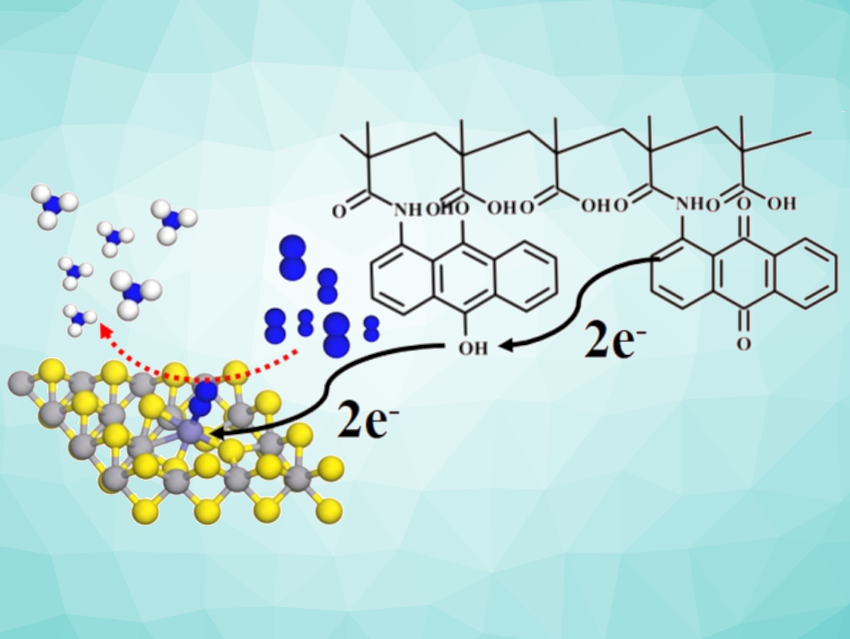The electrocatalytic nitrogen reduction reaction (NRR) is considered a promising approach to N2 fixation. However, the development of highly efficient catalysts for the NRR is still a challenge.
Xiaojun Han, Harbin Institute of Technology, China, and colleagues have synthesized a catalyst based on Fe-doped VS2 nanosheets and a polymer matrix for electrocatalytic ammonia synthesis. With this catalyst, the team aimed to improve electron utilization.
Usually, the direct electron transfer between the electron donor (the electrode) and the electron acceptor (the catalyst) is limited by distance, resulting in low electron utilization. Mediating electron migration between the electrode and catalyst could, thus, help to achieve outstanding NRR performance.
In this case, the researchers used a conductive organic polymer, 1-aminoanthraquinone-functionalized polymethacrylic acid, as a matrix to promote the electron transfer between Fe-doped VS2 nanosheets and the electrode. The Fe-doped VS2 nanosheets were prepared using a solvothermal method. The two components were loaded onto a carbon paper electrode. The resulting catalyst shows high NRR activity and selectivity, with an NH3 yield of up to 31.6 μg h−1 mg−1and a faradaic efficiency towards NH3 of up to 23.5 %.
- Fe‐VS2 electrocatalyst with organic matrix mediated electron transfer for highly efficient nitrogen fixation,
Xiu Ziyuan, Ming Zheng, Jiadong Li, Feng Wei, Changchang Dong, Mingrui Zhang, Xin Zhou, Xiaojun Han,
ChemSusChem 2022.
https://doi.org/10.1002/cssc.202200741



